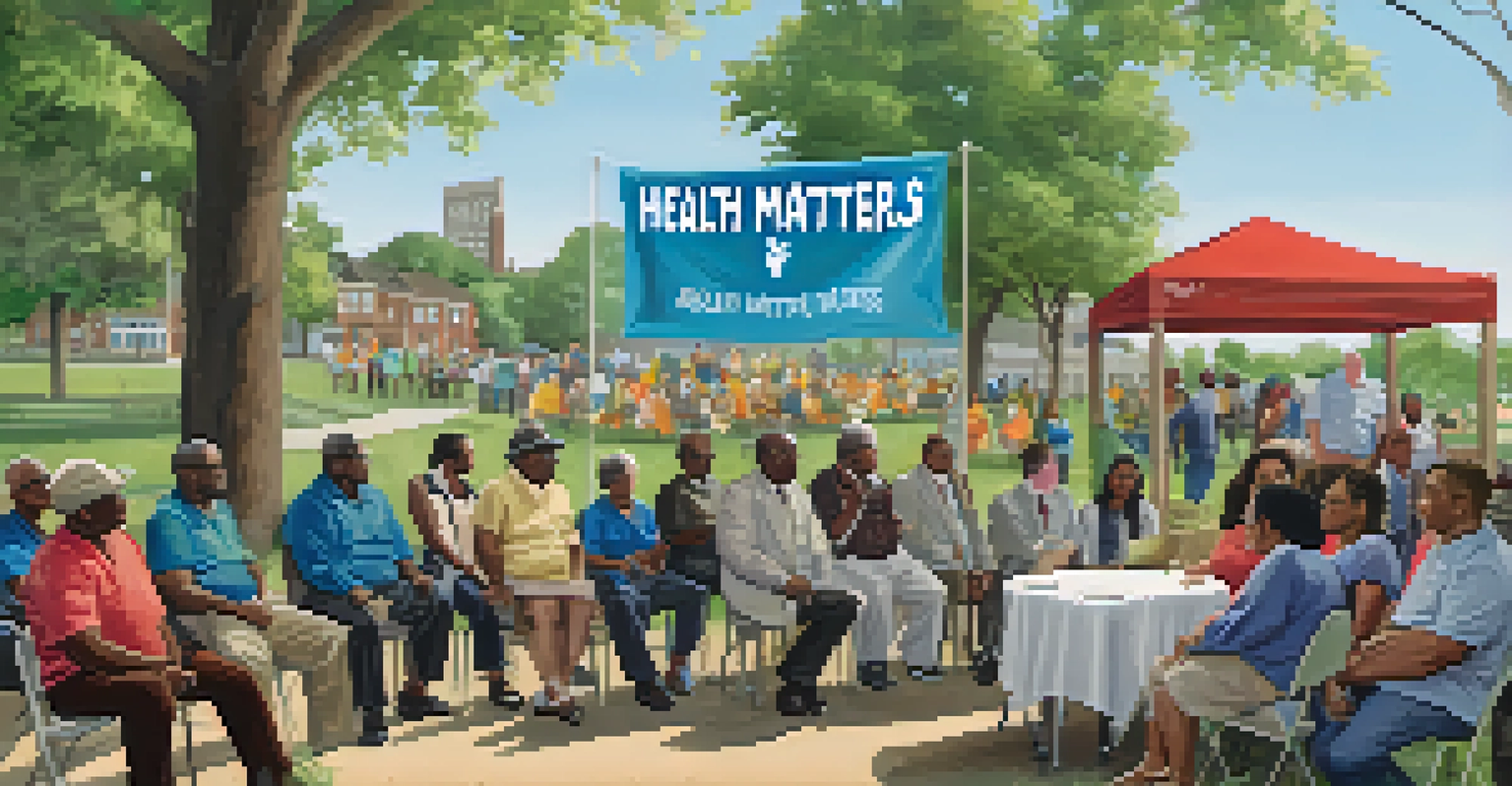Newark's Response to Public Health Crises: A Community Review

Understanding Newark's Unique Health Challenges
Newark, like many urban centers, faces a multitude of public health challenges, including high rates of chronic diseases and disparities in access to healthcare. These issues are often exacerbated by socioeconomic factors, making it crucial for the community to understand and address them collectively. The city's rich diversity also means that health interventions must be tailored to meet the specific needs of various populations.
Public health is not just about healthcare but about creating a healthier society through community engagement.
Over the years, public health crises such as the opioid epidemic and the COVID-19 pandemic have highlighted these vulnerabilities. Each crisis requires a nuanced approach that considers both immediate health impacts and long-term solutions. Community engagement becomes essential in identifying the most pressing needs and effective strategies.
By fostering a culture of awareness and collaboration, Newark can better equip itself to handle current and future health challenges. Understanding these unique factors is the first step in crafting effective responses that resonate with the community.
Community Engagement: The Heart of Newark's Response
One of the most significant strengths in Newark's public health response is its commitment to community engagement. Local organizations, health departments, and residents work collaboratively to share information and resources. This partnership not only empowers residents but also ensures that health initiatives are grounded in the community's reality.

For instance, during the COVID-19 pandemic, local leaders organized town hall meetings to discuss health guidelines and vaccine availability. These gatherings highlighted the importance of transparent communication and created a platform for residents to voice their concerns. The result was a more informed public that felt involved in the decision-making process.
Community Engagement Drives Health
Newark's commitment to community engagement fosters trust and collaboration, leading to better health outcomes.
Such proactive engagement fosters trust and encourages residents to participate in health initiatives. When the community feels heard and valued, it leads to better health outcomes and a more resilient population.
Innovative Health Programs Tailored for Newark
In response to public health crises, Newark has implemented a range of innovative health programs that cater specifically to its community. For example, mobile health clinics have been deployed in underserved neighborhoods to provide essential services such as vaccinations, screenings, and health education. This approach breaks down barriers and brings healthcare directly to those who need it most.
The health of the community is the health of the individual, and this is a principle we must uphold.
Additionally, programs focusing on mental health support have gained traction, especially in light of the emotional toll of recent crises. Initiatives that offer counseling services and wellness workshops have been crucial in addressing the psychological impacts on residents. These efforts highlight the city's commitment to holistic health.
By prioritizing innovative solutions that address both physical and mental health, Newark is setting a precedent for how urban areas can respond effectively to crises. Tailoring programs to local needs fosters a sense of ownership among residents, encouraging them to take charge of their health.
Partnerships with Local Organizations and Businesses
Building strong partnerships with local organizations and businesses has been vital in Newark's public health response. These collaborations enable the pooling of resources and expertise, allowing for more robust health initiatives. For instance, local nonprofits often work alongside health departments to provide outreach and education in the community.
Businesses have also played a crucial role, particularly during the pandemic, by offering their spaces for vaccination clinics and health fairs. This not only expands access to services but also enhances community engagement as local citizens see familiar faces in health initiatives. Such synergy is a powerful reminder of how interconnected the community is.
Targeted Outreach Reduces Disparities
By focusing on marginalized populations, Newark's targeted outreach initiatives aim to address health disparities effectively.
Through these partnerships, Newark demonstrates that a collective approach to health can lead to more effective responses. By leveraging community assets, the city can create a stronger safety net for its residents.
Addressing Health Disparities Through Targeted Outreach
Newark is acutely aware of the health disparities that affect its residents, and targeted outreach is a key component of its public health strategy. Recognizing that not all communities are equally affected by health crises, the city has focused on reaching marginalized populations through tailored programs. This includes language-specific health education materials and culturally sensitive services.
For example, during the COVID-19 vaccination rollout, efforts were made to reach communities with high rates of vaccine hesitancy. This involved collaborating with community leaders who could effectively communicate the importance of vaccination to their networks. Such targeted efforts have proven essential in ensuring equitable access to healthcare.
By addressing health disparities head-on, Newark not only improves individual health outcomes but also works towards a healthier, more equitable community. This commitment to inclusivity is a hallmark of effective public health strategies.
Leveraging Technology for Enhanced Health Communication
In today's digital age, technology plays a pivotal role in Newark's public health communication strategies. The city has embraced various digital platforms to disseminate critical health information quickly and efficiently. From social media campaigns to smartphone apps, these tools help keep the community informed about health resources and updates.
For instance, during health crises, the city utilizes text message alerts and social media posts to provide real-time information about vaccination sites or health guidelines. This swift communication is vital in ensuring that residents have access to timely information, especially when navigating urgent health situations.
Technology Enhances Health Communication
Leveraging digital platforms allows Newark to disseminate critical health information swiftly, keeping the community informed.
By leveraging technology, Newark can enhance its outreach efforts and engage a broader audience. This modern approach not only keeps the community connected but also empowers individuals to take proactive steps towards better health.
Evaluating Newark's Public Health Outcomes
As Newark continues to address public health crises, evaluating the effectiveness of its strategies is crucial. Regular assessments help identify successful initiatives and areas that need improvement. By analyzing health outcomes and community feedback, the city can refine its approaches to better serve residents.
For example, after the implementation of a smoking cessation program, health officials gathered data on participation rates and health improvements. This evaluation process not only informs future public health strategies but also demonstrates accountability to the community. Residents can see the tangible results of their involvement and investment in these programs.

Through ongoing evaluation, Newark can adapt to changing health needs and ensure that its public health responses are both effective and relevant. This commitment to continuous improvement is essential for building a healthier future.